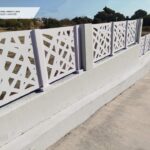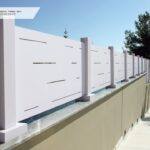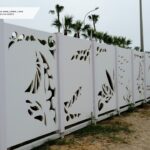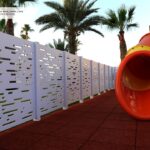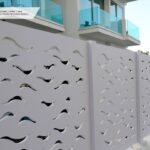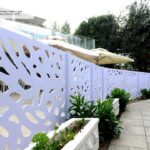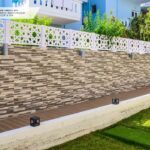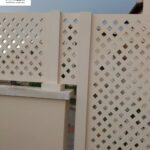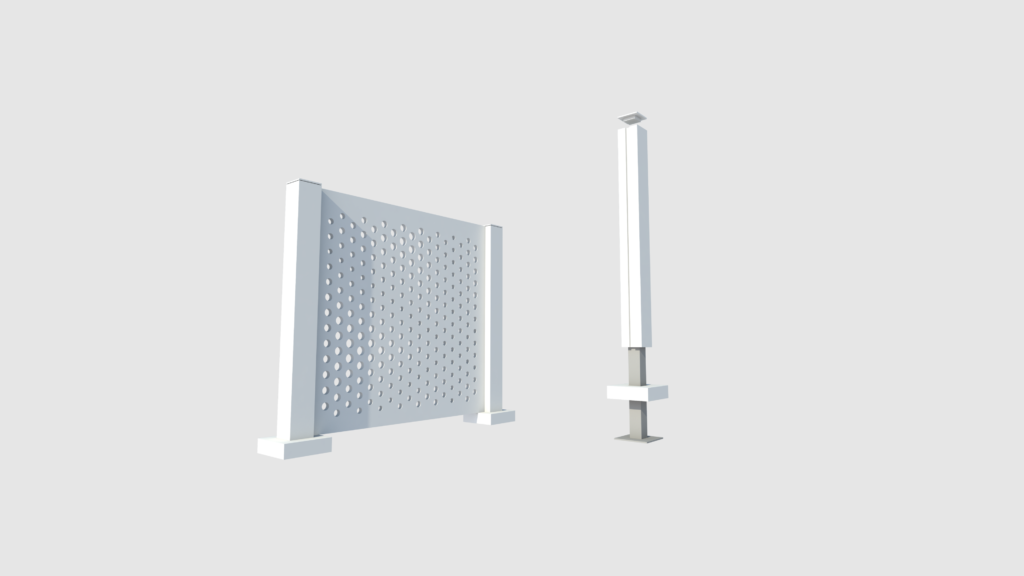PVC Fencing Type A
Your non-conventional option for securing your perimeter
Advantages
How to Order
Installation
Advantages
Why should I choose PVC for Fencing?
- 100% waterproof material – does not rot.
- Custom or standard designs can be perforated on our PVC panels.
- Adoptable in any type of paint and painting tools.
- No maintenance is required after installation.
- Flame retardant material (self-extinguishing ability 5 sec).
- All the fastening accessories are provided.
- Same look on both sides.
- Easy and quick installation.
- Clear aesthetic result.
- Maximum height 150cm.
- Recycled material.
- Resistance to wind pressure.
How to Order
- Landing.
- Surface dimensions.
- Pattern Code (if you have your own design you can send us electronic form in [email protected]).
- Record more information.
Installation
- Insert the piles in the paddle with sturdy screws (ratchets or screws) in a straight line that will be sutured (placing the first and last piles). The distance between the piles from channel to channel should be half a centimeter greater than the dimension of the PVC panel.
- From the first stake to the last stake, we place a suture to check the alignment of the piles, pressing to the right we correct any deviations from the suture and again screw the screws into the flange. If the deviation is greater and you do not, simply correct by pressure we place an additional washer under the gasket to push / correct any further misalignment.
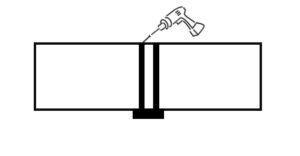 We put all the flange covers and then we put the PVC piles one by one, then we place the panels between them and fix the fence from the top of the pile cover, we can see the panel connection with the pile. There should be 2 screws diagonally attached to connect the 3 points.
We put all the flange covers and then we put the PVC piles one by one, then we place the panels between them and fix the fence from the top of the pile cover, we can see the panel connection with the pile. There should be 2 screws diagonally attached to connect the 3 points.- Finally we place the plugs in the piles, which we also stick with silicone.
Panels Painting Procedure
OUTDOORS
PVC (polyvinyl chloride) is a recyclable material, available in natural PVC white, is not Super White and panel to panel may differ in color because of the recycled material.
Painting process for outdoor space, trellis or Type B fencing, structures can be painted with any type of paint after plastic priming first, then reinstall the screws with a fist and then apply the paint with a roll or gun.
Request a Quote
Let Us Help You Find the Right Solution
The form was sent successfully.
An error occured.


